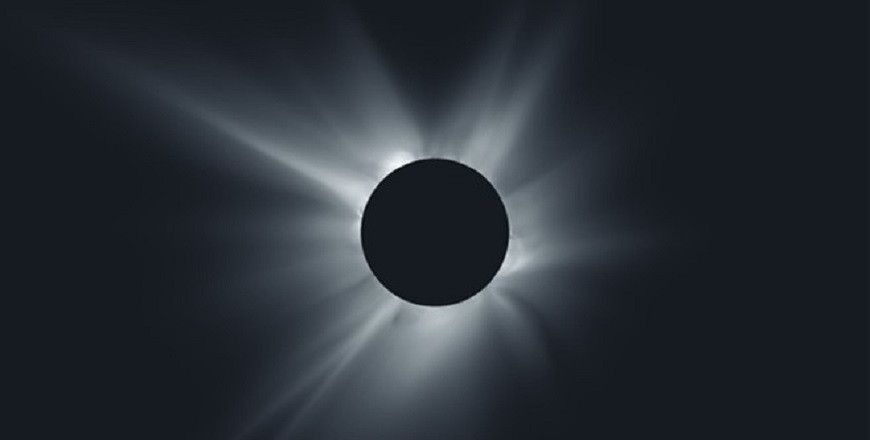
Dr. Donald M. Hassler
Southwest Research Institute
Boulder, Colorado
Solar eclipses have been observed by humans for thousands of years, inspiring many different religious, superstitious and scientific explanations. Today, we know that a solar eclipse is caused by the moon passing between the earth and the Sun, and a total solar eclipse offers astronomers a unique opportunity to study the outer atmosphere of the Sun, called the corona, with unmatched clarity. The moon's occultation of the Sun makes a perfect "coronagraph" by which solar physicists can study the corona with very high spatial and temporal resolution, and without the annoying problems of scattered light inherent in man-made coronagraphs. Dr. Hassler will talk about the evolution of solar eclipse observations over the years, and how we can prepare for the “Great 2024 North American Eclipse” that will happen on April 8.
Image courtesy Predictive Science, Inc., most recent prediction of the solar corona for the April 8, 2024 total solar eclipse. The image shows the predicted white light brightness in the corona at totality.
Dr. Hassler is Program Director at Southwest Research Institute in Boulder, CO and former Director of the Institut d’Astrophysique Spatiale in Orsay, France. He is a leader in several scientific fields, including Solar Physics, and has observed almost a dozen solar eclipses, either performing eclipse experiments, giving scientific and public talks or simply enjoying the eclipse as a tourist. Dr. Hassler is the lead of a NASA Concept Study to fly a spacecraft to image the Sun’s poles, and is the Principal Investigator of the Radiation Assessment Detector (RAD) instrument on the NASA Mars Science Laboratory currently operating on Mars.
Comments
No comments posted yet.
You have to be registered and logged in in order to post comments!